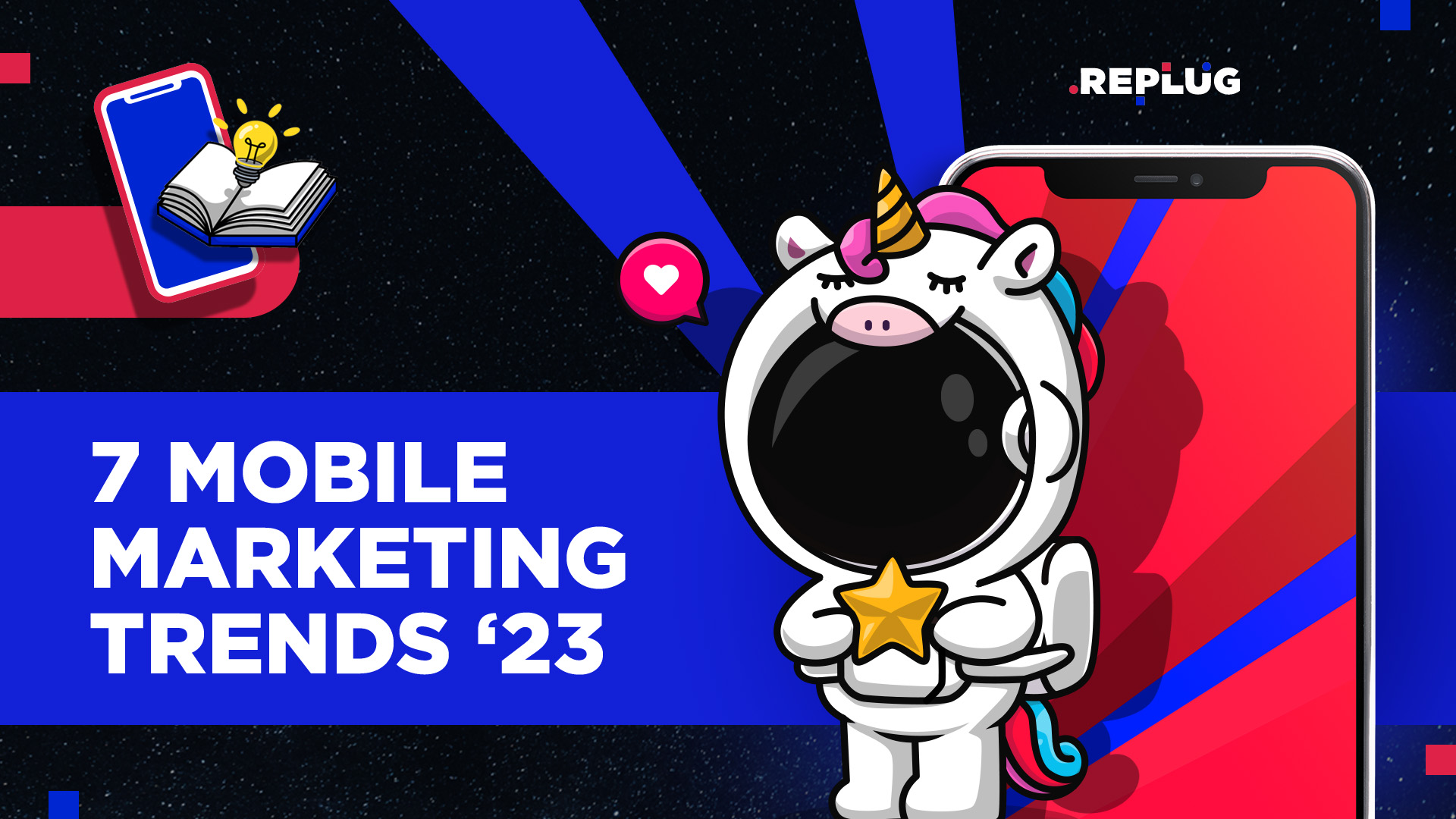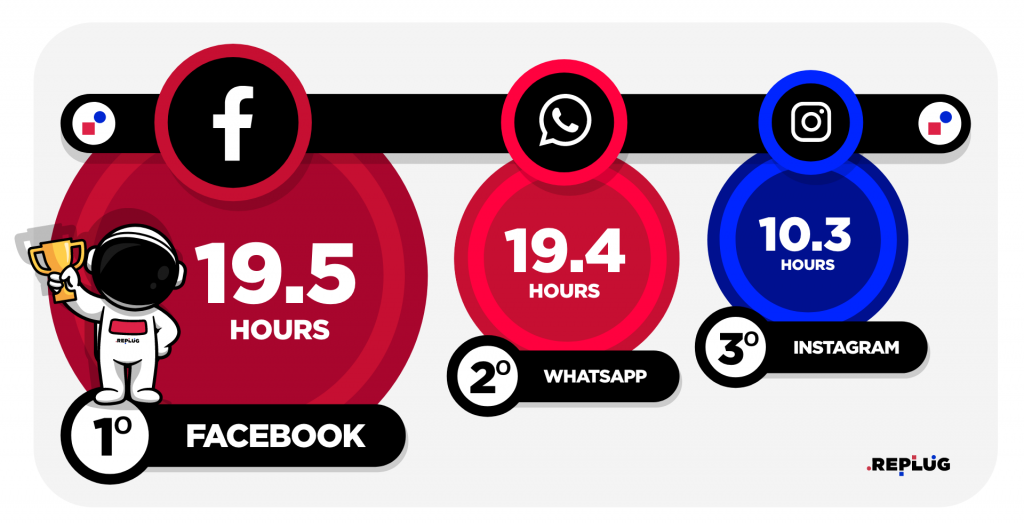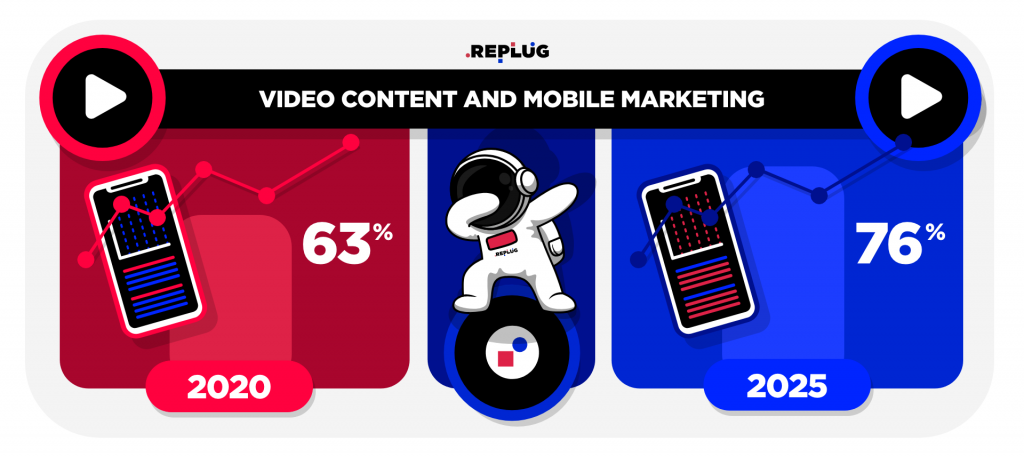7 Mobile Marketing Trends to Look Out for in 2023

In the last two years, privacy flipped measurement and optimization completely. What are the mobile marketing trends rising in 2023? And why should you be aware of them?
Table of Contents
- Mobile Marketing Trends: Statistics You Should Be Aware Of
- AI-Powered Mobile Marketing
- Desire for Immersive Content
- Making the Best Out of TikTok
- Video Content and Mobile Marketing
- Never-Ending Personalization
- 5G as a Technology Standard
- Smooth User Onboarding
One of the primary app marketing trends for the upcoming year will be the importance of app user privacy in in-app brand marketing strategies. The same we witnessed in 2022.
Moreover, as it is standard, we believe that innovations developed in 2021 and 2022 will continue to influence customer behavior and market habits as developers build on them. To begin, marketers are gradually leveraging augmented reality (AR) and virtual reality (VR)— for example, to create engaging online purchasing experiences.
Nevertheless, that is not the only hot topic we are going to discuss. Read on to find out more about what may arise in the upcoming year—to get crucial insights and leverage your mobile app marketing game!
Mobile Marketing Trends: Statistics You Should Be Aware Of


In 2023, mobile-first marketing will be a critical element of any campaign strategy. As the global smartphone user base continues to increase exponentially, more customers than ever are turning to mobile apps, social networks, and immersive technology for online fulfillment.
With an estimated 7.7 billion smartphone owners by 2027, it’s time to say goodbye to conventional marketing approaches and embrace a fully interactive, mobile future.
And when we are talking about apps, in 2020, for example, there were 218 billion new mobile app downloads. Moreover, by 2023, over $935 billion in revenue is expected to be generated by mobile apps.
What is more, according to Datareportal, app users spend most of their time on social and communication platforms (44%), entertainment and video apps (26%), and gaming apps (9%).
In addition, WhatsApp, Facebook, and Instagram have the highest usage time. An average consumer spends 19.5 hours each month on the Facebook application, 19.4 hours on WhatsApp, and 10.3 hours on Instagram.
Now, when speaking about mobile app marketing efforts, we can see some crucial stats that can help us shape our approach to app marketing in the upcoming year.
Accenture reports that 91% of users are more likely to purchase from brands that provide targeted offers and suggestions, and 72% say they only respond to tailored messages (SmarterHQ).
And, of course—personalization, according to 55% of marketers, has the most potential to improve user engagement and boost user experience (Evergage).
Now, Let’s take a closer look at some of the potential mobile marketing trends that may dominate an app marketing strategy in 2023.


1. AI-Powered Mobile Marketing
Regarding mobile trends, AI has also become a choice in today’s marketing strategies if marketers wish to maintain track of their audience metrics.
AI may play a significant role in social media marketing trends in 2023, particularly for mobile marketers. Moreover, AI is expected to make user targeting considerably easier by assisting in segmenting demographic areas and the generation of hyper-personalized social advertisements.
AI in social media marketing is predicted to skyrocket, with the market expected to expand by 28% to $2.2 billion by the end of 2023 solely, according to MarketsandMarkets specialists.
2. Desire for Immersive Content
Moving on with mobile marketing trends and talking about immersive content, mobile marketers could get unique with what they share in 2023.
Since 2018, VR/AR has emerged as a popular technology in various mobile marketing initiatives. Following a 75% increase in the usage of virtual reality technologies in the marketing industry, the following year may see an immersive turn for mobile marketing techniques.
Based on the popularity of the metaverse, mobile marketing is projected to revolve around developing smart and technically sophisticated content. That can be in the form of augmented reality filtration on social networks or engaging product placement within popular gaming platforms.
With customer rivalry at an all-time peak, mobile marketers must make unique content in 2023 to maintain a competitive advantage.
The idea here is to keep track of your present content and engagement levels when experimenting with various formats. Your content format should differ for each audience, platform, and direction.
Different age groups, specialty users, and network algorithms demand different levels of commitment, so it’s critical to know your audience thoroughly before making a move.
3. Making the Best Out of TikTok
So, where do we even begin? It’s safe to say that any discussion of the US government’s quest to force the company to sell to Oracle has ended. TikTok experienced both new service and technology launches and difficulties throughout the pandemic.
TikTok was the primary media source for tens of millions of people to watch Olympic footage in 2021, and it had hit 1 billion users by September. That same year, TikTok fans launched the hashtag #TikTokMadeMeBuyIt, which produced seven billion views and increased sales for several brands.
Looking ahead to 2023, it’s clear that TikTok is on track to replicate Facebook’s great success (both in volume and financially) but in a short amount of time. Either by learning from Facebook’s failures or simply utilizing the distinct media and cultural ecosystem we live in today.
TikTok Ads, the marketing platform introduced in 2019, will continue to be improved, supplied with new features, and gathering more and more data from TikTok users in order to match the skills and effectiveness of Facebook Ads.
That is where app marketers come in and make use of the chances and innovation that TikTok has been providing for the last two years.
4. Video Content and Mobile Marketing


In 2020, video traffic accounted for 63% of all mobile traffic. This figure is expected to rise to 76% by 2025 (Ericsson Mobility Report).
You might think that after hearing about video content being one of the mobile ad trends for a few consecutive years, we shouldn’t be discussing it in 2023, but you’d be mistaken. It doesn’t appear that any other medium will be able to overtake video as the most effective channel for delivering mobile ads this year or in the near future.
The launch of Apple’s ATT framework, which pushed many mobile advertising networks to rethink how they could collect data without relying on a third-party supplier like Facebook, made it very evident.
Basically, as we know, to compensate for the lack of behavioral data, you must create stronger video creatives to entice users to download your mobile app or engage with your product.
5. Never-Ending Personalization
Ads that speak directly to users may capture their attention. Personalization, according to Adweek, can enhance advertising expenditure efficiency by up to 30%.
So, when it comes to personalization, it truly is simple. It doesn’t matter which year mobile marketing trends we’re discussing.
The better app marketers can manage the tight line between personalizing their marketing approaches while maintaining people’s privacy, the greater their chances of acquiring loyal users for their applications and loyal clients for their brands.
Marketers must begin engaging with their prospective clients in clever ways because traditional ads have become outdated (in some ways). Therefore, speak your consumers’ language and allow them to discover your app via content provided by others exactly like them.
User-generated content will continue to play an important role in user acquisition and interaction across many app categories. In addition, leveraging content creators on a progressive basis will boost our activities while lowering acquisition costs.
Moreover, the Shot in iPhone advertising campaign for the debut of the iPhone 7 is an example of an effective UGC campaign. Previous iPhone devices had poor photo performance before the advertisement. So, what happened?
Apple addressed the issue by inviting people to snap low-light images of their phones, with the results shown on massive billboards in large cities worldwide.
Another great example of personalization is the Custom Product Pages by Apple. That is something that app marketers can use to align the experience of the ads and make them feel personalized.
For example, we can show an ad of a plumber for an invoicing app, and the user lands on the Store Page with a plumber on it. Alternatively, we show a photographer in the ads, and the Store Page shows the same person.
6. 5G as a Technology Standard
Speaking of mobile marketing trends, with its lower latency, quicker speeds, and faster data transmission, 5G is gradually stepping forwards to becoming the mobile technology standard in 2023.
But how would this affect mobile app marketing? It will be all about the user experience, with projections that 1 billion people will use 5G by 2023. According to a CCS study, China will maintain its lead, with far more than half of its citizens using 5G by the end of the upcoming year.
This mass 5G adoption will almost certainly result in higher-quality app development. That will spur growth in the mobile app development industry by boosting production from both customers and developers.
The imprints of 5G technology can reach the pinnacle of success across numerous digital industries with adaptability and smart computing connectivity.
7. Smooth User Onboarding
This topic may not come off as a trend, but believe us; it will be crucial for app marketers and developers to get it done correctly.
In 2023 (like in 2022), the average consumer will onboard, browse, and leave faster than before, demanding a new view of standard retention measures.
According to 2021 research, the average customer has 40 applications installed on their smartphone yet spends nearly 90% of the time on only 18. That is why having an excellent onboarding journey is more important than ever.
Onboarding is the first starting point in a mobile app in 2022 and 2023. It is the first time a user encounters your application and gets a taste of what it has to offer.
It’s also a crucial time to introduce your user to the app’s features and perks, allow them to enter their login information, and, most crucially, capture personal details that can be used to send personalized notifications and content.
Therefore, your mobile app’s success and durability begin with an efficient onboarding approach.
A vital first step is to greet your users with an attractive blend of targeting, personalization, and welcoming messaging. While many apps take different techniques, customization can often take several forms.
Mobile Marketing Trends: Conclusion
Mobile app marketing is constantly evolving and changing. These mobile marketing trends, expected to be active in 2023, will determine whether apps succeed or fail. In the middle of the millions of apps currently available, how can you ensure that your app stands out and serves what people want? Maybe this post has clarified essential points for you.
To remain competitive in today’s mobile-oriented world, consider the 2023 trends when building or enhancing your app marketing plan and approach.
Moreover, the best way to ensure your company’s success is to combine recent top trends into the process of designing an app marketing strategy. Make 2023 your year by taking advantage of the opportunity!
Need help coming up with an effective app growth strategy for 2023? Start by clicking here to get in touch with our team of experts.
FAQ
What Is New in Mobile Marketing?
Tiktok’s debut as a new video platform is one of the important mobile marketing trends in 2022. Furthermore, the focus of 2023 will be on seamless mobile app user onboarding.
What Is the Future of Mobile Advertising?
The mobile creative ad expenditure is expected to reach $247.68 billion by 2026. The rise of mobile advertising is mostly related to shifting consumer behavior. Smartphones have been largely utilized for conversation or entertainment for many years.
Originally published on November 25, 2022, updated on January 11, 2023.

Comments